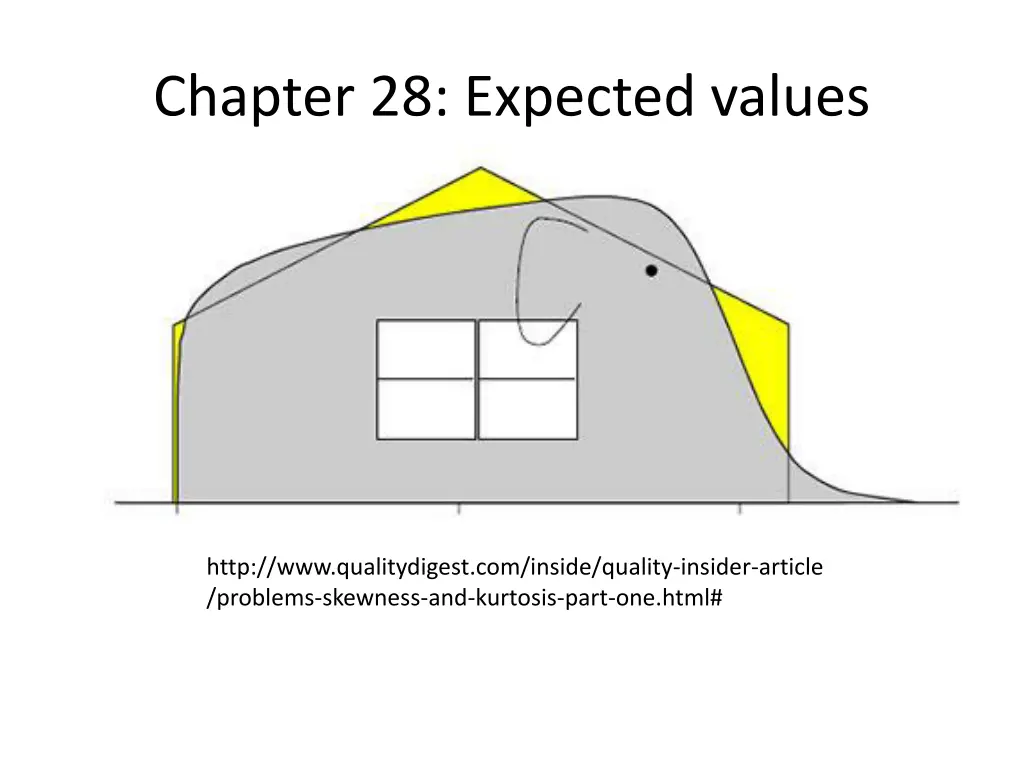
Understanding Expected Values in Statistics
Explore the concept of expected values in statistics through examples and comparisons between discrete and continuous variables. Delve into functions, variances, and more to enhance your understanding of this fundamental statistical concept.
Download Presentation

Please find below an Image/Link to download the presentation.
The content on the website is provided AS IS for your information and personal use only. It may not be sold, licensed, or shared on other websites without obtaining consent from the author. If you encounter any issues during the download, it is possible that the publisher has removed the file from their server.
You are allowed to download the files provided on this website for personal or commercial use, subject to the condition that they are used lawfully. All files are the property of their respective owners.
The content on the website is provided AS IS for your information and personal use only. It may not be sold, licensed, or shared on other websites without obtaining consent from the author.
E N D
Presentation Transcript
Chapter 28: Expected values http://www.qualitydigest.com/inside/quality-insider-article /problems-skewness-and-kurtosis-part-one.html#
Comparison of Expected Values Discrete Continuous ? ? = ???(?) ? ? = ???? ?? ?
Example: Expected Value (class) What is the expected value in each of the following situations: a) The following is the density of the magnitude X of a dynamic load on a bridge (in newtons) b) The train to Chicago leaves Lafayette at a random time between 8 am and 8:30 am. Let X be the departure time. 1 8 3x 8 0 + + 0 x 2 = = 2 0 8 x 8.5 f (x) = = f (x) X X else else
Chapter 29: Functions, Variance http://quantivity.files.wordpress.com/2011/05/us-sector-2004-empiricals1.png?w=600h=396 http://quantivity.wordpress.com/2011/05/02/empirical-distribution-minimum-variance/
Comparison of Functions, Variances Discrete ? ?(?) Continuous ? ?(?) ?(?)??? ?? Function (general) = ?(?)??(?) = ? Function (X2) ? ?2= ?2??(?) ? ?2= ?2??? ?? ? Variance Var(X) = ?(X2) (?(X))2 Var(X) = ?(X2) (?(X))2 SD ??= ???(?) ??= ???(?)
Example: Expected Value - function (class) What is ?(X2) in each of the following situations: a) The following is the density of the magnitude X of a dynamic load on a bridge (in newtons) b) The train to Chicago leaves Lafayette at a random time between 8 am and 8:30 am. Let X be the departure time. 1 8 3x 8 0 + + 0 x 2 = = 2 0 8 x 8.5 f (x) = = f (x) X X else else
Example: Variance (class) What is the variance in each of the following situations: a) The following is the density of the magnitude X of a dynamic load on a bridge (in newtons) b) The train to Chicago leaves Lafayette at a random time between 8 am and 8:30 am. Let X be the departure time. 1 8 3x 8 0 + + 0 x 2 = = 2 0 8 x 8.5 f (x) = = f (x) X X else else
Friendly Facts about Continuous Random Variables - 1 Theorem 28.18: Expected value of a linear sum of two or more continuous random variables: ?(a1X1+ + anXn) = a1?(X1) + + an?(Xn) Theorem 28.19: Expected value of the product of functions of independent continuous random variables: ?(g(X)h(Y)) = ?(g(X))?(h(Y))
Friendly Facts about Continuous Random Variables - 2 Theorem 28.21: Variances of a linear sum of two or more independent continuous random variables: Var(a1X1+ + anXn) =?1 Corollary 28.22: Variance of a linear function of continuous random variables: Var(aX + b) = a2Var(X) 2Var(X1) + + ?? 2Var(Xn)
